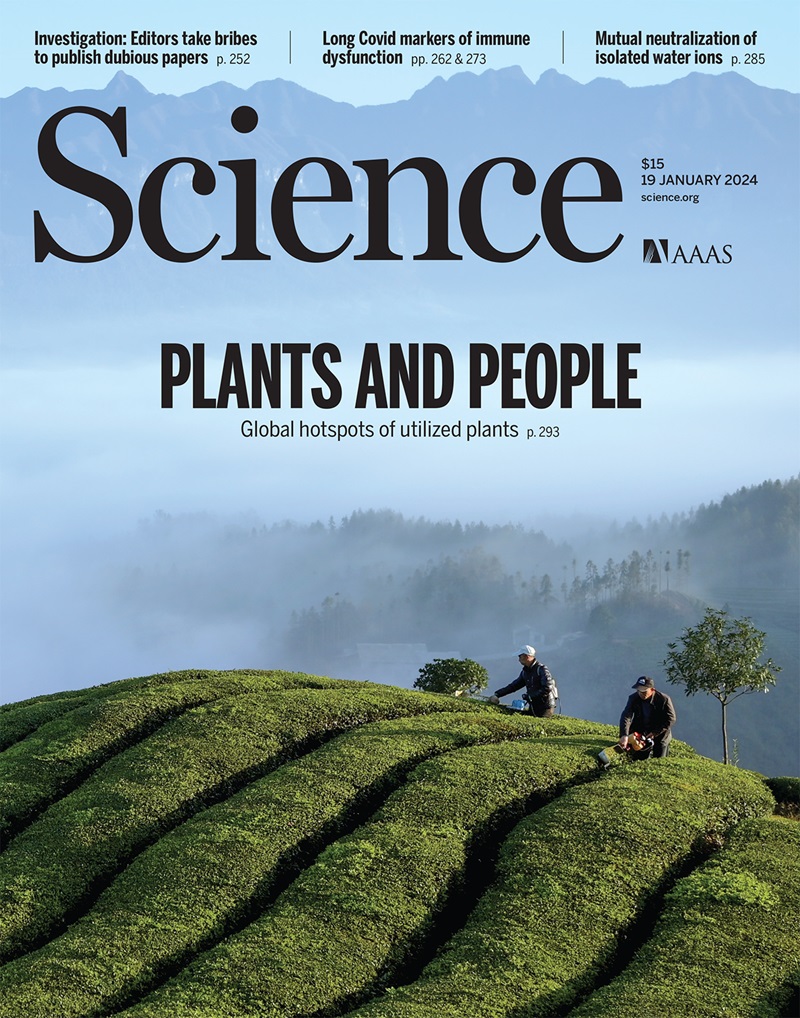综合多种证据流理解昆虫生物多样性变化
IF 45.8
1区 综合性期刊
Q1 MULTIDISCIPLINARY SCIENCES
引用次数: 0
摘要
昆虫在动物物种多样性中占主导地位,但却面临着许多人为变化驱动因素的威胁。昆虫生态学的许多特征使它们成为一个具有挑战性的群体,而知识的碎片状态损害了我们对它们的地位做出一般陈述的能力。本文综述了昆虫生物多样性变化评估面临的挑战。我们描述了多重证据线-时间序列,空间比较,实验和专家意见-可以整合,以提供昆虫生物多样性如何响应驱动因素的综合概述。应用这种方法将产生跨越空间、时间和变化驱动因素的昆虫生物多样性的可测试预测。鉴于人类对整个环境的影响正在加速,这种方法可以对昆虫生物多样性变化进行急需的快速评估。本文章由计算机程序翻译,如有差异,请以英文原文为准。

Integrating multiple evidence streams to understand insect biodiversity change
Insects dominate animal species diversity yet face many threats from anthropogenic drivers of change. Many features of insect ecology make them a challenging group, and the fragmented state of knowledge compromises our ability to make general statements about their status. In this Review, we discuss the challenges of assessing insect biodiversity change. We describe how multiple lines of evidence—time series, spatial comparisons, experiments, and expert opinion—can be integrated to provide a synthesis overview of how insect biodiversity responds to drivers. Applying this approach will generate testable predictions of insect biodiversity across space, time, and changing drivers. Given the urgency of accelerating human impacts across the environment, this approach could yield a much-needed rapid assessment of insect biodiversity change.
求助全文
通过发布文献求助,成功后即可免费获取论文全文。
去求助
来源期刊

Science
综合性期刊-综合性期刊
CiteScore
61.10
自引率
0.90%
发文量
0
审稿时长
2.1 months
期刊介绍:
Science is a leading outlet for scientific news, commentary, and cutting-edge research. Through its print and online incarnations, Science reaches an estimated worldwide readership of more than one million. Science’s authorship is global too, and its articles consistently rank among the world's most cited research.
Science serves as a forum for discussion of important issues related to the advancement of science by publishing material on which a consensus has been reached as well as including the presentation of minority or conflicting points of view. Accordingly, all articles published in Science—including editorials, news and comment, and book reviews—are signed and reflect the individual views of the authors and not official points of view adopted by AAAS or the institutions with which the authors are affiliated.
Science seeks to publish those papers that are most influential in their fields or across fields and that will significantly advance scientific understanding. Selected papers should present novel and broadly important data, syntheses, or concepts. They should merit recognition by the wider scientific community and general public provided by publication in Science, beyond that provided by specialty journals. Science welcomes submissions from all fields of science and from any source. The editors are committed to the prompt evaluation and publication of submitted papers while upholding high standards that support reproducibility of published research. Science is published weekly; selected papers are published online ahead of print.
 求助内容:
求助内容: 应助结果提醒方式:
应助结果提醒方式:


